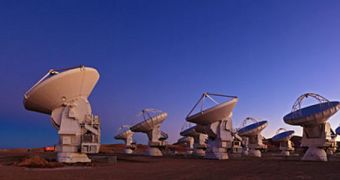Thanks to Babak Tafreshi, a Photo Ambassador with the European Southern Observatory (ESO), we can now feast our eyes on the technological and scientific marvel that is the Atacama Large Millimeter/submillimeter Array (ALMA) radio telescope interferometer.
The result of fruitful cooperation between Europe, the United States, Canada, countries in eastern Asia and the Republic of Chile, ALMA was built in the Atacama Desert of northern Chile, on the Chajnantor Plateau. Its antennas are perched some 5,000 meters (16,500 feet) above sea level.
The telescope consists of 66 radio telescope dishes, with diameters of either 7 or 12 meters (23 or 40 feet). Radiations detected by all these antennas are centralized to produce millimeter and submillimeter images of the night sky at incredible resolutions.
Babak Tafreshi's new image showcases less than 20 of the antennas at the ALMA site. Despite its extreme resolution, nearly 10 times greater than that of the Hubble Space Telescope, ALMA will be surpassed in terms of capabilities by 2024, when the South African/Australian Square Kilometer Array is finished. SKA will be 50 times more sensitive than ALMA, astronomers estimate.

 14 DAY TRIAL //
14 DAY TRIAL //